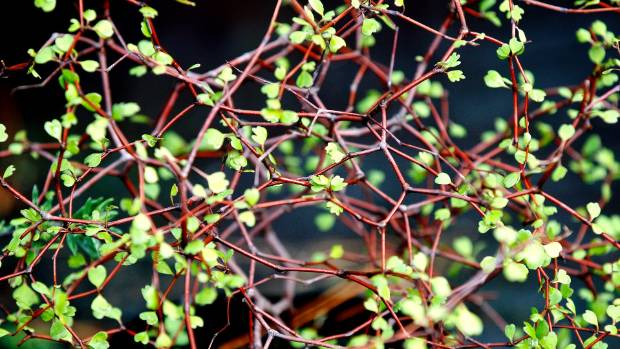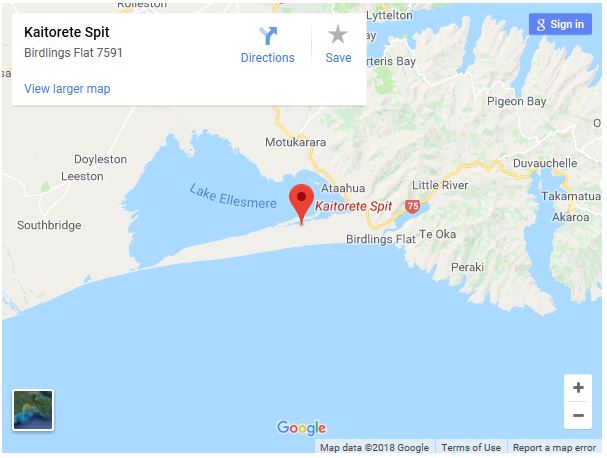Farmer 'destroyed' a third of country's naturally-growing endangered shrubby tororaro plants
DOMINIC HARRIS
Last updated 09:02, May 1 2018
https://www.stuff.co.nz/environment/103507786/court-action-over-alleged-endangered-plant-destruction
Environmental campaigners are taking a Canterbury farmer to court over claims he destroyed a huge swathe of a native plant "extremely rare and threatened" in the wild.
Kaitorete Spit, a narrow stretch of land separating Lake Ellesmere from the sea, is home to around 90 per cent of the country's shrubby tororaro, muehlenbeckia astonii – famous for its heart-shaped green leaves – most of which can be found on a single farm.
Forest & Bird alleges its new owner sprayed, cleared and cultivated three of the farm's eight paddocks to plant oats, destroying almost a third of the plant's national population.

STUFF
An example of Muehlenbeckia astonii in a nursery.
The work is said to have also killed numerous other plants, lizards and birds and ruined their habitats.
A Canterbury farmer has laid waste to a threatened native shrub, knocking out a third of the species in one fell swoop.
It is not clear whether the land clearance has actually broken any laws, but the organisation believes it is illegal and is seeking clarity from the courts.
It is also taking legal action against Christchurch City Council to get a regulation under its district plan that allows clearance of indigenous vegetation so pastures can be improved declared void, saying it lacks clarity.
Kevin Hague, the organisation's chief executive, said biodiversity was "in crisis" in New Zealand.

FOREST & BIRD
Environmentalists Forest & Bird claim footage taken with a drone shows vast areas of land at Kaitorete Spit that once was home to the endangered shrubby tororaro plant is now destroyed.
"Often it's a case of small impacts adding up to a major loss, but here a single incident has made it far more likely for a species to go extinct in the wild.
"That these plants remain in people's gardens does nothing to mitigate the impact – we have a responsibility to not let these species go extinct in the wild."
Thomas bought the land, near Bayleys Rd and understood to be around 800ha, recently from Michael Bayley, whose family had owned it for generations. The area was once earmarked by Kiwi space company Rocket Lab as a potential launch site.
DAVID WALKER/STUFF
The spit separates Lake Ellesmere from the sea, and is home to New Zealand's largest population of shrubby tororaro plants.
Thomas told Stuff he acquired it to winter stock on the spit's free-draining land.
After being contacted by a member of the public concerned about the clearance, Forest & Bird employed ecologist Christopher Davis to assess what was happening, and used a drone to capture aerial footage of the land.
In an affidavit to the environment court, Davis said up to 30 per cent of the nation's shrubby tororaro was likely to have been destroyed from spraying or drilling – a process that sows oats to be grown as cattle feed.
"The scale and extent of the clearance has resulted in severe adverse effects that cannot be remediated or mitigated, and adverse effects of clearance cannot be offset."
The Department of Conservation (DOC), which along with Environment Canterbury and Ngai Tahu owns the majority of the spit, is now working with Thomas in a bid to buy a piece of land to protect the remaining shrubby tororaro population.
Thomas, whose business Wongan Hills Ltd runs his family's land interests around the Banks Peninsula, said that before buying the land they employed experts to ensure planning requirements were met.
The business "continued to honour" an agreement from the 1990s to protect shrubby tororaro plants in a small, fenced-off area, and that after carrying out some initial work he was made aware of a further population of plants on the land.
"We're horrified to find ourselves in this situation and are working as fast as we can to reach a collaborative, long-term solution."
